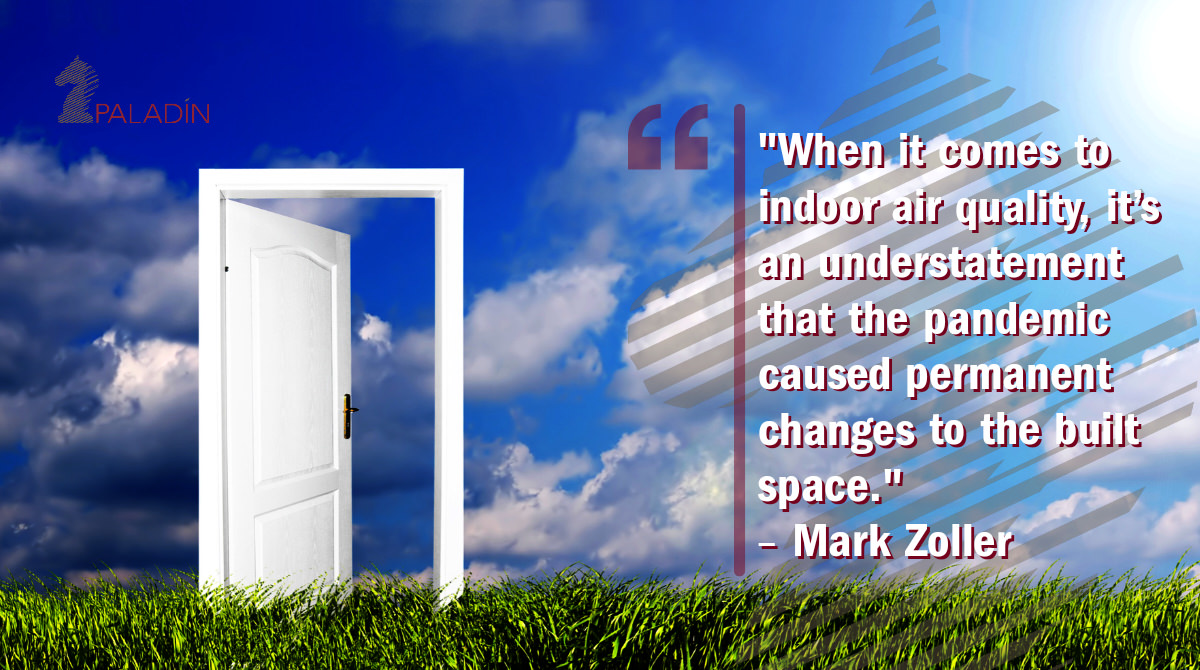Mark Zoller, Paladin, Inc.

When the pandemic made landfall in the U.S. in early 2020, what had been a casual interest in air quality became a full-blown concern for building owners everywhere. Whereas many had considered “fresh air” in terms of compliance with local building codes and the ability to open a window to the outside, the threat of airborne pathogens challenged players in the built space to wrestle with the implications of what might be in the air and their liability for it. The question of air quality suddenly had much higher stakes.
From the time of that seismic shift, the challenge of verifying indoor air quality has become a front and center issue for building owners. Not only is fresh outside air proven to play a role in general occupant health, but also a key concern in LEED certification process, an influence on construction budgets, and a hallmark of a truly healthy building. That means physical health for the people who use the building and financial health for the owner. As professionals in the realm of building commissioning, our job is to take owners from their admission that they “want a healthy building” to a point they understand that a “healthy, affordable and useful building” is an achievable goal. The key is how to get there.
Air quality is a complex, multidimensional issue that deserves careful study, diligent measurement, and regular maintenance. For example, it might seem obvious that the need for quality air can be met by simply increasing the influx of outside air. However, the moisture that comes with it can lead to biological contamination if the air isn’t conditioned and handled properly.
For building owners focused on sustainability certification (LEED, WELL, etc.), the demands of the process have gotten more stringent. For example, there is even less room in the standards for particulate matter and the definition of “what is a contaminant?” continues to evolve. (Ten years ago, ozone wasn’t a concern for too many building owners, but the changing standards have elevated it to a challenge.) It takes some creativity and system flexibility to address air quality over the long-term.
Setting aside the benefits of healthy buildings, owners must understand the maintenance impacts. The ongoing threat of litigation in our culture can allow lawsuits to propagate rapidly. Therefore, it is important to protect your investment with an effective, documented air quality program. Not only can it limit the environmental factors that might spur litigation, it can also help defend against lawsuits by nature of the exhaustive documentation that accompany a well designed and implemented system.
When it comes to achieving suitable air quality, we have found the following rules apply:
- SET HIGH STANDARDS: Understand that minimum ventilation rates are just that: the minimum. Rather than proposing a design that just clears the bar, look for the right combination of ventilation, filtration, and monitoring to meet the goals.
- RECOGNIZE THE BENEFITS: Creating a healthy building with high quality air is certainly rooted in the desire to avoid occupant illness, but it can also contribute to happier, more productive occupants. Ensure that you have documented metrics for each component of your ventilation system. Also, consider Triple Bottom Line Analysis for the ventilation system measures under consideration.
- APPRECIATE THE INVESTMENT: A healthy building isn’t necessarily more expensive. You can provide for an energy efficient, healthy building with systems that aren’t too needy on maintenance.. The key is to work out an integrated approach in the design phase then stay focused on its implementation. If you take the necessary steps, you’ll get the required results.
It is an understatement that the pandemic caused permanent changes to the built space. Owners are looking for solutions while national and local codes are evolving in response to market demand. Thankfully, the marketplace is responding to concerns about air quality with new technology and better equipment. For example, hospital grade filters are becoming more common in other types of buildings (schools, offices, etc.). Things are getting better, so be encouraged. If you set indoor air quality as a priority early in the process, you can meet those goals AND have a system that’s manageable and affordable. That’s literally a breath of fresh air that everyone, no matter the size of your pocketbook, can appreciate.
